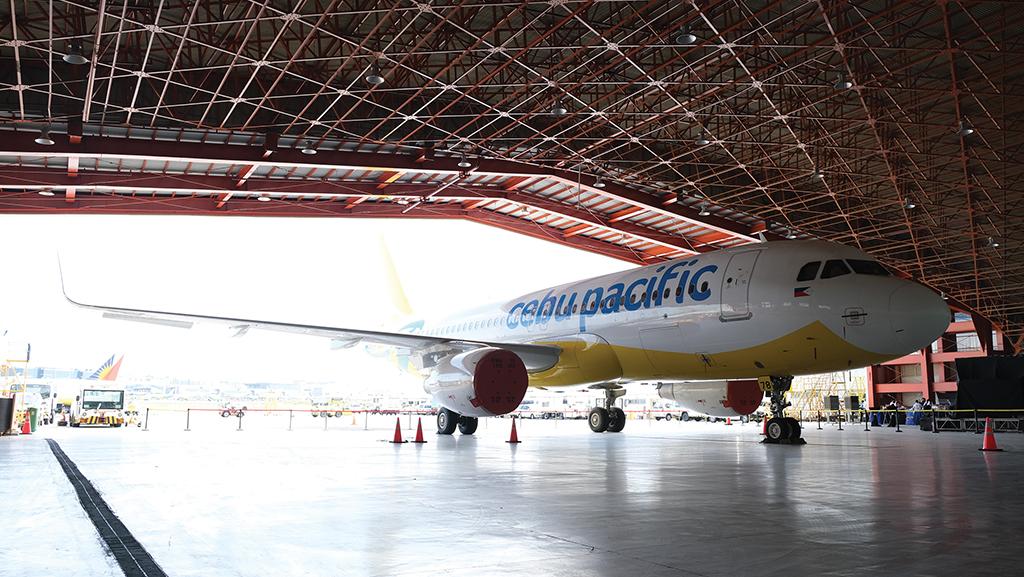How Cebu Pacific Is Combating Supply Chain, Cost Challenges

Shevantha Weerasekera, vice president for engineering maintenance at Cebu Pacific Air, talks about how the Philippines-based airline is focusing on aligning the airline and maintenance divisions and how it is working with vendors to navigate supply chain and cost challenges.
As restrictions lift to allow more cross-border travel, how have Cebu Pacific’s fleet reactivation plans played out?
Early in the pandemic, about 50% of the fleet was parked in the Philippines as well as in Australia. My joining the airline in February [2022] coincided with borders gradually opening, and we had to get all of the, aircraft out of storage to start putting back a network that made sense for the market. February and March meant lots of maintenance activity such as getting aircraft out of storage and undertaking tasks such as cabin clean-ups. From that point on, it’s been about managing the network, and so far we’ve seen a strong recovery, with growth particularly strong in the domestic market. We were aggressive in our strategy when the borders first started opening and, as a result, we’ve carved out a larger share of the domestic market, to the point where in April and May we were running out of aircraft to cater to demand. We quickly reached out to lessors to ask for assistance. As a result, we extended the lease returns of some of the aircraft. Some of the Airbus A320ceo aircraft we’d planned to take out of our fleet this year have been extended by another 12-18 months.
What are some of your immediate priorities for the airline’s maintenance division?
In 2020, Cebu Pacific took control of an MRO joint venture after buying out the majority stake of SIA Engineering in Aviation Partnership Philippines Corp. There are two entities now following the share swap: One is SIA Engineering, taking control of the base maintenance activities at Clark International Airport, while Cebu Pacific took 100% control of the line maintenance operation at Manila International Airport. I was hired because they wanted somebody who knows both the airline and MRO sides of the business. From the moment we stepped in, there was a need to understand what we had inherited, make it work and put together a long-term strategy for the maintenance division of Cebu Pacific. Previously, it was all centered on outsourcing maintenance, but now the focus has shifted somewhat. Now we run our own line maintenance business with third-party customers to consider. So there was a bit of work to be done to make this new setup work, and this involved changing the mindset so that we are now one team.

As the recovery from the pandemic picks up, are you seeing any supply chain challenges?
The MRO supply chain has been a significant challenge for some time, and it continues to be one today. The cabin side is one example of this. This area of the aircraft is a significant priority for me, and I don’t like seeing cabin defects. Even though we are a low-cost carrier, with the new aircraft coming in, our cabin product is very strong, and we could go head-to-head with full-service carriers. We found out that some of the cabin OEMs had a shortage of parts and were having difficulty ramping up production. As a result, we had to start fabricating seat covers and carpets locally. Previously, we had purchased them from suppliers or from the OEM directly. We also had to start developing capability for minor cabin repairs. We developed that capability quickly to be able to cater to these supply chain efficiencies.
This also extended to the airframe, as we’ve noticed that even some of the big OEM players have had difficulty supporting us with replacement parts. We have a couple of very good pool-provider agreements running, and these have been extended and even expanded to cover more part numbers under those provider agreements. AFI KLM E&M covers the narrowbody fleet while HAECO handles the A330ceos and Airbus looks after the A330neo fleet. So the support is good, but still there are delays in logistics, from getting parts out of China to Europe-based providers facing challenges in moving components.
What are some of the challenges for Cebu Pacific in the labor market, and what strategies have you adopted to combat them?
We are watching what’s happening in the rest of the world and are getting ready to meet the challenges. How-ever, we don’t have a problem with labor shortages right now because a definite positive thing about the Asia-Pacific region and the Philippines especially is that we have a highly skilled labor market, and manpower is available in abundance. Our acquisition of the MRO joint venture included a maintenance training school as well.
When we identified the possibility of labor shortages further down the line, due to factors such as Middle Eastern companies looking to the Philippines to recruit skilled technicians, we had several maintenance training plans running simultaneously. This ensured a strong pipeline of candidates producing 30-40 people a month entering the workforce and having them ready to be deployed when necessary. Most of the workforce are Filipino nationals, although we do also employ some expatriates. We will continue to work with universities and domestic training schools together with our own training center.
Inflation is manifesting in higher costs for airlines and MRO providers. Are you experiencing any challenges related to this?
We’ve seen significant increases in material costs. Whatever the budget for this financial year, we found we underbudgeted due to the material cost increases. Time and material-related component maintenance is where we’ve seen the biggest cost spike. An example of this is in auxiliary power units, with some covered by power-by-the-hour arrangements and others under a time and material arrangement, which are typically when the maintenance is due. We’ve found that each shop visit progressively increases by a couple of percentage points just because labor rates and material prices are fluctuating month by month. Even for pre-agreed power-by-the-hour agreements, some vendors have imposed surcharges or COVID-related taxes to cover their own costs. While we understand the difficulties many are having, we are also cost-conscious as an airline, and a contract is a contract.
Cebu Pacific
History: Cebu Pacific was founded in the Philippines in 1988, but did not commence operations until 1996. Initially serving the domestic market, the low-cost carrier expanded into international flights across the Asia-Pacific region in the 2000s. The airline currently flies to more than 60 domestic and international destinations in 14 countries including Australia, China, Japan, Singapore, and the United Arab Emirates.
Fleet: Cebu Pacific operates a fleet of 53 Airbus aircraft: seven A321neos, seven A321ceos, five A320neos, 26 A320s, seven A330s and one A330 freighter. It also flies 21 ATR turboprop aircraft including six ATR 72-500s, 13 ATR 72-600s and two ATR freighters.
Maintenance capabilities: All domestic line maintenance on the Cebu Pacific fleet is done in-house; international line maintenance is done by other service providers. All A checks and tasks such as engine and landing gear changes are done in-house. Heavy C checks are outsourced, but the airline says it is looking to gain capability for lighter C check work on its ATR and A320- family aircraft.
